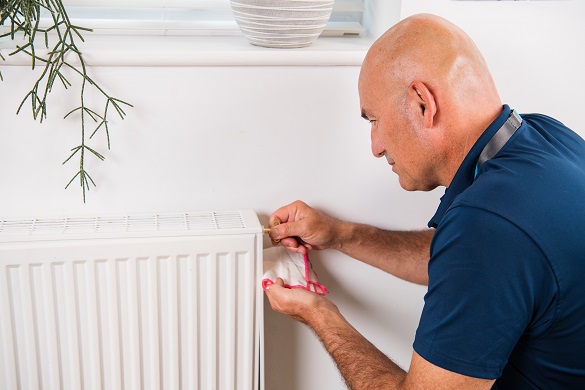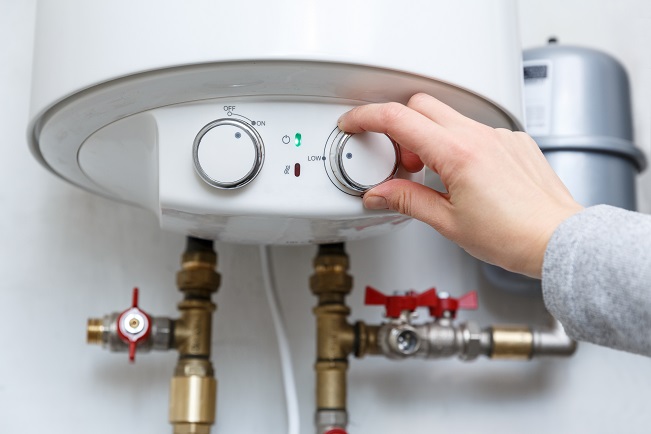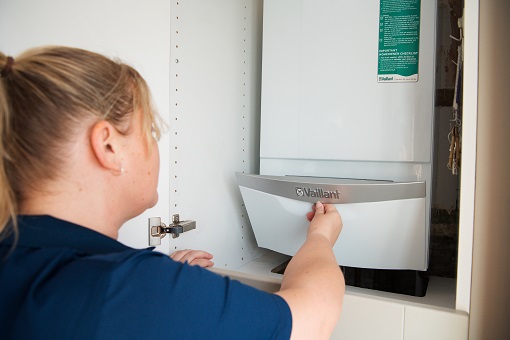Where would we be without our boilers? They’re usually tucked away in a cupboard or somewhere else out of sight. But they’re the beating heart of any home – quietly working away to provide you with hot water and heating when you need it.
To make sure yours is performing at its best, it’s important to know how to check and set it at the right pressure. If the pressure is too high or low, eventually it could break down. By checking your boiler’s pressure once a month, you’ll be able to tackle any potential issues early on.
We’ll going to tell you all you need to know about how to set your boiler pressure correctly and what you need to do if it’s too high or low.
Why it’s important to set the right boiler pressure

Boilers use gas, oil, or electricity to produce hot water or steam for heating. When the fuel is lit, it heats a heat exchanger, transferring warmth to water that circulates through taps, radiators or underfloor heating. But to do this efficiently, it needs to run at the right pressure. This can vary between boiler makes, but generally it should be between 1 and 2 bar.
How to check your boiler pressure
Locate your boiler’s pressure gauge
The pressure gauge is normally a round dial marked with numbers, ranging from 0 to 3 bar, displayed prominently on the front of the boiler. It might have a green and red section to helpfully show when the pressure is too low or too high (coloured red) or when the pressure is correct (coloured green). It could be a digital display or if you’ve got an older boiler, the pressure gauge might be hidden underneath with the pipework. If you still can’t find it, check your boiler manual.
How to read the pressure gauge
Assuming your boiler has a dial gauge, the needle will point to the current pressure level. If it’s in the high-pressure zone of somewhere above 2.5 bar, it could lead to system issues or breakdowns. If the pressure is below 1 bar (in the low-pressure zone), it could mean less heat being transferred to the areas in your home where it’s needed. So you want to make sure your pressure is always between 1 and 2 bar to keep your heating system working properly.
How to raise your boiler pressure

Over time, it's normal for boiler pressure to drop below 1 bar. You might notice signs like your radiators not heating up properly or a lack of hot water. Things like minor leaks or bleeding your radiators can make this happen but don’t worry, it’s easy to repressurise your boiler.
While these adjustments should be easy for anyone to carry out, it's important that you feel comfortable and confident doing so. If you don’t, you can always contact a Gas Safe engineer.
1. Turn off the boiler, making sure it’s cooled down before attempting any adjustments
2. Look for the filling loop directly under the boiler – a braided hose with valve levers on each end, connecting to the boiler and the mains
3. If you can’t see a filling loop, your boiler may have a keyed filling loop or keyless internal filling loop – check your boiler’s manual to confirm
4. Turn both levers to open the valves – they’re open when they align with the direction of the filling loop
5. When you hear water running and see the boiler pressure going up, shut off both valves again when it gets to around 1.2 bar
6. Check for any leaks around the boiler before turning it back on
How to lower your boiler pressure

If your pressure is somewhere above 2.5 bar, it’s too high. This can happen when too much water is added to the boiler to correct low pressure. It can also happen when the filling valves are left open accidentally, letting water continue to flow in. Thankfully most modern boilers have a safety valve that will shut it down and let water escape when the pressure gets too high. But high pressure can still damage your heating system so you want to avoid it if you can. Fortunately, lowering your boiler pressure is as straightforward as raising it.
1. Turn off the boiler, making sure it’s cooled down before attempting any adjustments
2. Find the filling loop directly under the boiler – a braided hose connected to the boiler and the mains, making sure the valves on each end are closed
3. Then use a radiator key to bleed your radiators and release any excess air, turning the valve on each one until you hear a hissing sound
4. Keep checking your boiler’s pressure gauge until it returns to the desired range of between 1 to 2 bar
5. Make sure there aren’t any signs of leaks before turning your boiler back on
Get expert help with your boiler
Anyone with a boiler should know how to carry out simple boiler pressure maintenance. By occasionally checking the pressure and making any necessary adjustments, you’ll be doing all you can to make sure your boiler is performing as it should.
But if you persistently have issues, notice leaks, or feel unsure about anything to do with your boiler, you should contact a professional. Expert engineers have the knowledge to diagnose and address complex problems. Prevention is key, so scheduling an annual boiler service can help detect any issues early.
Our blog is loaded with more related articles

Boiler help and advice
How to choose a new boiler
When the time comes to replace the boiler, it’s easy to fall into the trap of choosing the cheapest option that works &md...
Read more

Boiler help and advice
The 3 types of boiler you need to know about
If you’re looking to learn exactly what a combi boiler is and how it differs from other types, read our guide on combi vs...
Read more

Boiler help and advice
What to do if your boiler is leaking water
The boiler is an essential part of any modern home. Without it working you can forget about any hot showers to start the day or...
Read more
